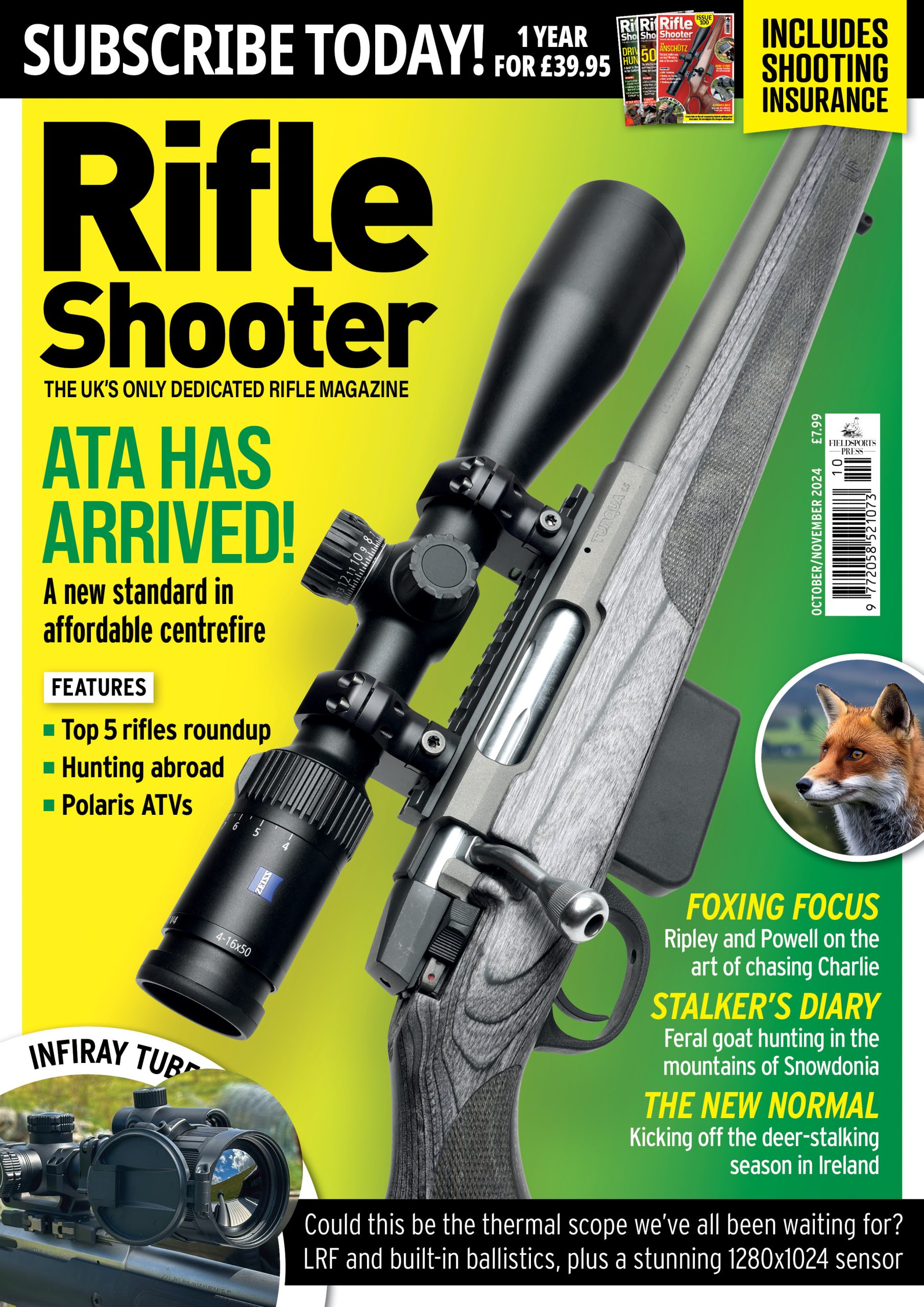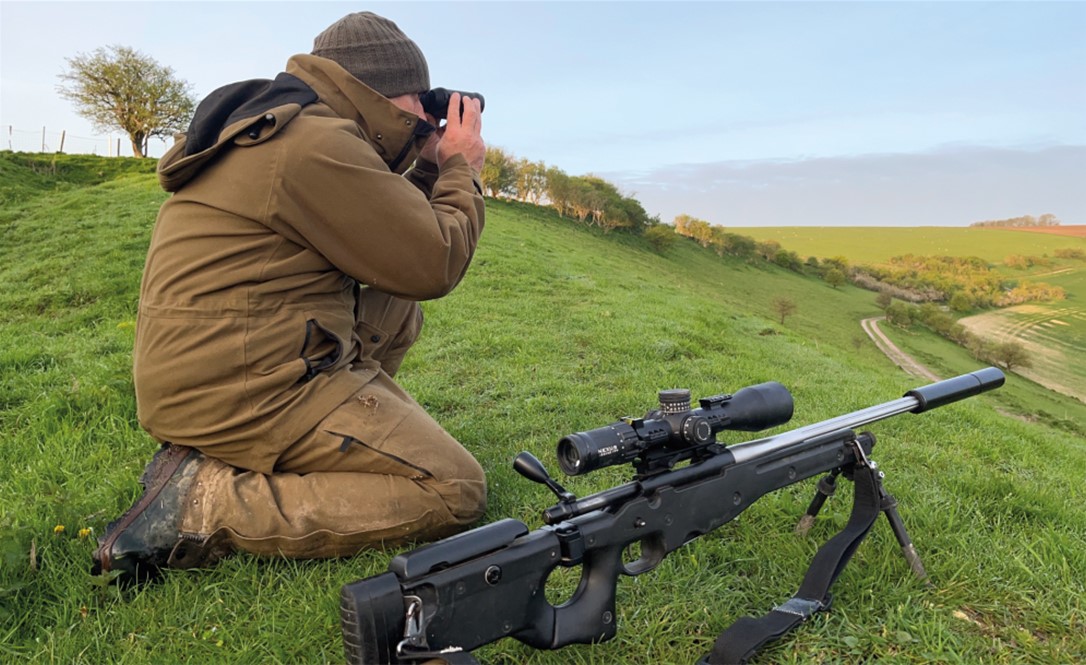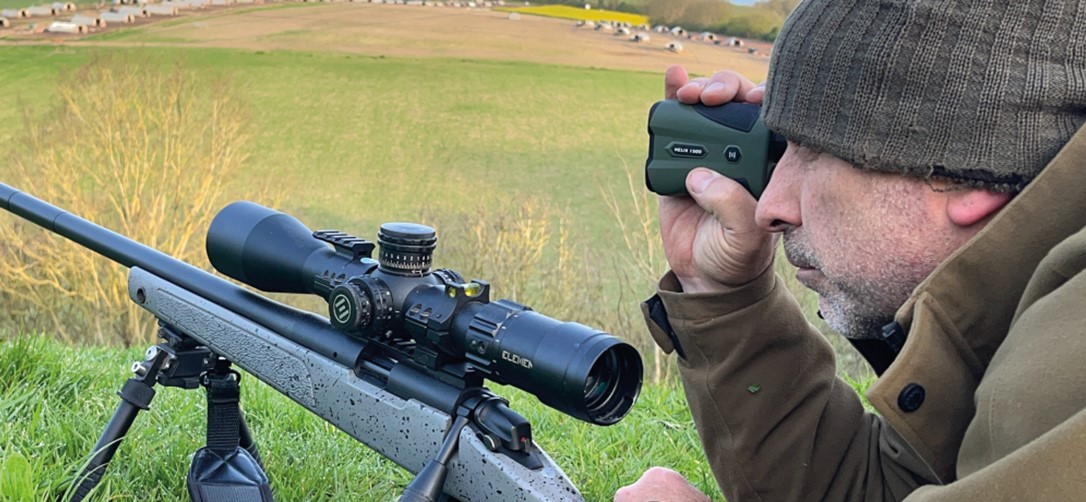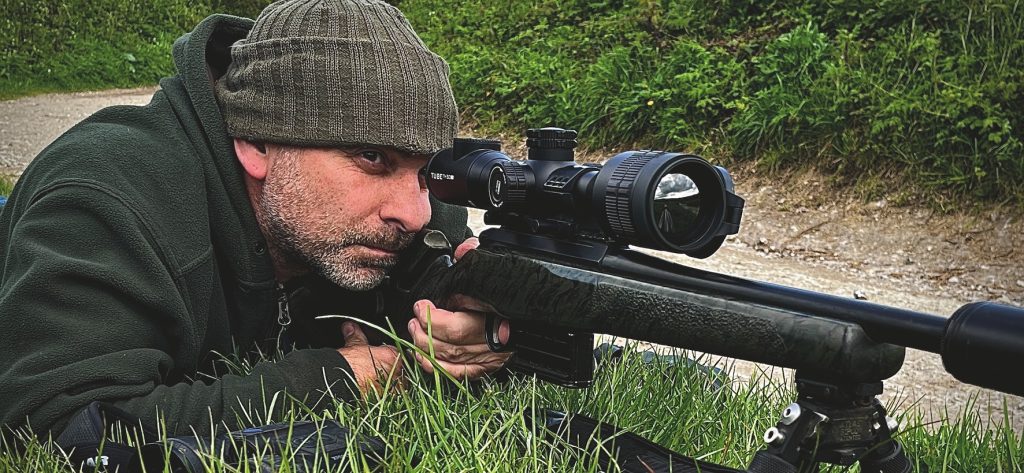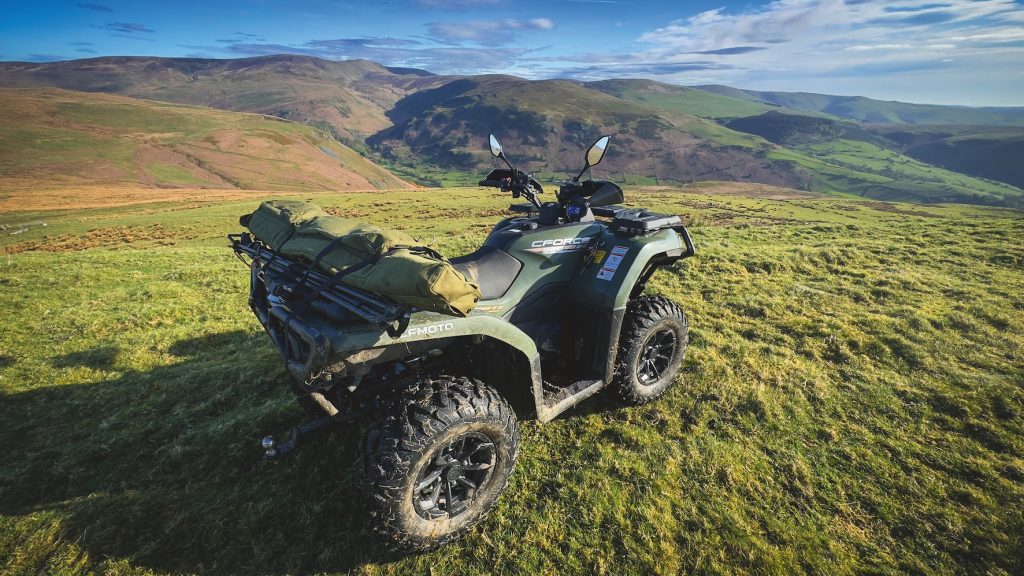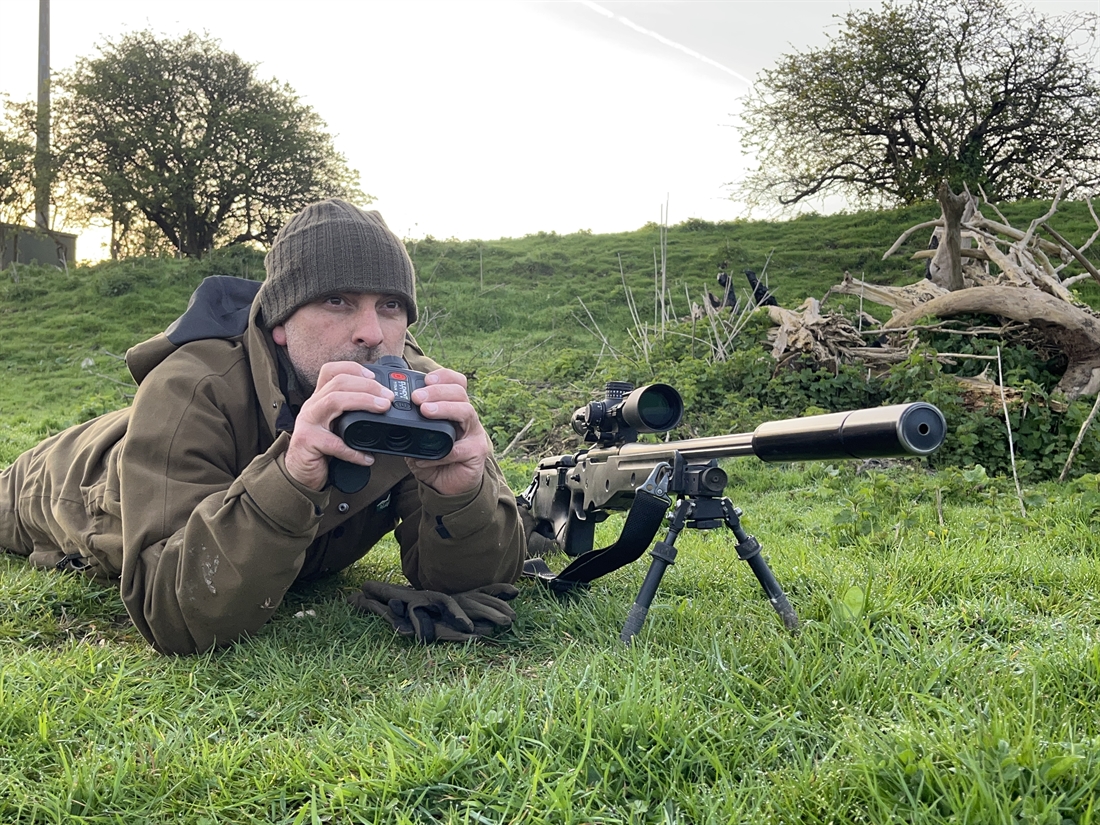
Since Element Optics launched I’ve been increasingly impressed not just with the quality and value for money of their products, but also with the way they constantly try to improve them based on customer feedback and new design ideas. So when two new rangefinders arrived for review I was excited to see what they would be like.
It’s no surprise that with the success of their increasing riflescope range that Element would branch out into rangefinders, especially after launching their own free Element Ballistics app last year to complement their long- range scopes.
The first of the new rangefinders is the Helix 1500, an extremely lightweight and very compact handheld hunting model designed to fit easily in a pocket, with the ability to range targets reliably out to 1500m and powered by a single CR2 battery.
The second model is the big brother to the Helix – the Titan 3K. This one is designed for the more extreme long-range enthusiast, with its impressive ability to range targets out to 3000m. It is a little larger and intended for two-handed use, but it is still very light and runs on a single 18650 battery that is rechargeable through the unit itself.
Long-distance ranging capabilities aside, both these units combine a hidden gem within, which is the ability to link via Bluetooth with the Element Ballistics phone app to give extremely accurate firing solutions based on information entered into the app for your rifle and ammunition combination.
The rangefinders will store and use the last ballistic profile you have uploaded from the app and will factor in environmental weather conditions, incline, spin drift and more at the touch of a button, to instantly display the range and the necessary correction needed for an accurate shot.
The Titan features 7x magnification and a tripod mounting adaptor in the base, which is a great advantage when trying to range small, distant targets. It also comes with a rugged, weatherproof padded case and attached lens cap.
Just like the Titan, the Helix model combines the same ballistic abilities but in a more compact form, with 6x magnification and a neat, rugged pouch that can be belt mounted or, like the Titan’s case, attached using the Molle system.
The Element team are all hunters, long-range and competitive shooters, and design and test this gear themselves, so you know that any Element product you purchase will be well thought out and practical for the use it’s intended. These two units certainly looked as if they would live up to that reputation, but how well would they perform in the field? In a strong wind and spells of rain I headed out at first light to put both units to the test.
I set up the Helix 1500 with the correct profile in the app selected for my .22 rimfire rifle, and the Titan 3K for my .260 Remington. Linking the phone to the devices was easy and in no time I had both selected profiles running in the relevant units. The app allows you to store ballistics profiles for four guns and quickly swap between them for the rangefinder, so one unit can be used with several rifles.
First up I wanted to test out the Titan to see if it really was capable of ranging out to 3000m. I was pleased to find it could indeed reach out to these distances and beyond, returning ranges out to the furthest distance I attempted, close to 3400m. I also compared the measured distances with my proven Leica Geovid rangefinding binos and found that they matched accurately.
I normally use a Kestrel wind meter with ballistics software, which works well, but it takes time to manually enter data prior to shooting. It was interesting to note that the Titan’s corrections matched the Kestrel’s and also how much incline affected these corrections when ranging up and down hill.
Being confident in the Kestrel’s corrections, I knew that if the Titan’s were similar then I wasn’t going to be wildly off. I was therefore happy to go straight out to 788m, aiming at a small scrape of exposed chalk clearly visible on the distant hillside.
With the wind slightly quartering in at 15-20mph, my first shot drifted to the right by 4 MOA, as would be expected, but was perfect for elevation. Having seen the shot land, I held off the required amount for wind drift on the next shot and hit centrally on the patch of chalk with a satisfying puff of white chalk dust.
Impressed with the ease of use of the Titan, I took another shot at a steel fox target I have set out on the bank at 608m, shooting directly into the wind. After what seemed like ages I saw a visible impact on the fox’s chest and a swinging target, followed a few moments later by the rewarding clang of the bullet hitting steel.
I will be pushing the ranges with the Titan and the .260 when the weather improves and I have a little more time to set out a selection of targets, but for now I was very impressed with just how easily and well it all worked.
I’ve been using the Element app regularly with my .22 to play about at longer ranges and knew it was surprisingly accurate out to a few hundred metres. So I was comfortable knowing the Helix was giving me that information from the app at the simple touch of a button rather than having to manually range the target and enter the distance to gain a firing solution.
For the next couple of hours I shot several rabbits coming out to enjoy the break in the weather, at ranges out to around 130m, and then after some plinking at over 300m on bits of chalk I managed to drop a rabbit at an impressive 280m. This was all the more amazing as I needed to dial in 12 MOA for the wind, which equates to close to a metre of wind drift.
The rangefinders both display a solution for wind drift, but don’t have the ability to measure the wind. You will therefore still need to measure or judge the wind speed and direction yourself, enter this data into the phone app and then update that to the rangefinder.
This sounds like a bit of a palaver but it’s actually a very simple procedure and can be completed in just a few seconds, and the relevant correction will be shown with the elevation correction on the rangefinder’s dual-colour TOLED display.
Would I buy either of these units? Yes, absolutely. Having all that data at the touch of a button saves a lot of time entering ranges, especially when target shooting and changing between multiple targets regularly. Likewise, for longer range hunting shots where every second can make the difference between having an opportunity and missing one, this ease of use will certainly be an advantage.
I often found myself trying to anticipate a fox’s route and ranging a fence post or tree along it’s likely path so that I would have time to range and work out the correction using my Kestrel ballistic windmeter. I could then give the fox a shout to try to stop him at the given spot.
Overall both units performed flawlessly, and I will certainly be regularly using both of them in the field. With both currently retailing with the Sportsman Gun Centre at for £366.99 for the Helix 1500 and £493.99 for the Titan 3K, I would say that they offer excellent value for money and are the next ‘must have’ accessory for the serious rifle shooter.
Related articles
CFMOTO CFORCE 520 EPS review
Looking for a reliable ATV for deer extraction and stalking? The CFMOTO CFORCE 520 EPS delivers full-spec utility, impressive off-road capability and serious value for money.
By Time Well Spent
Get the latest news delivered direct to your door
Subscribe to Rifle Shooter
Elevate your shooting experience with a subscription to Rifle Shooter magazine, the UK’s premier publication for dedicated rifle enthusiasts.
Whether you’re a seasoned shot or new to the sport, Rifle Shooter delivers expert insights, in-depth gear reviews and invaluable techniques to enhance your skills. Each bi-monthly issue brings you the latest in deer stalking, foxing, long-range shooting, and international hunting adventures, all crafted by leading experts from Britain and around the world.
By subscribing, you’ll not only save on the retail price but also gain exclusive access to £2 million Public Liability Insurance, covering recreational and professional use of shotguns, rifles, and airguns.
Don’t miss out on the opportunity to join a community of passionate shooters and stay at the forefront of rifle technology and technique.

